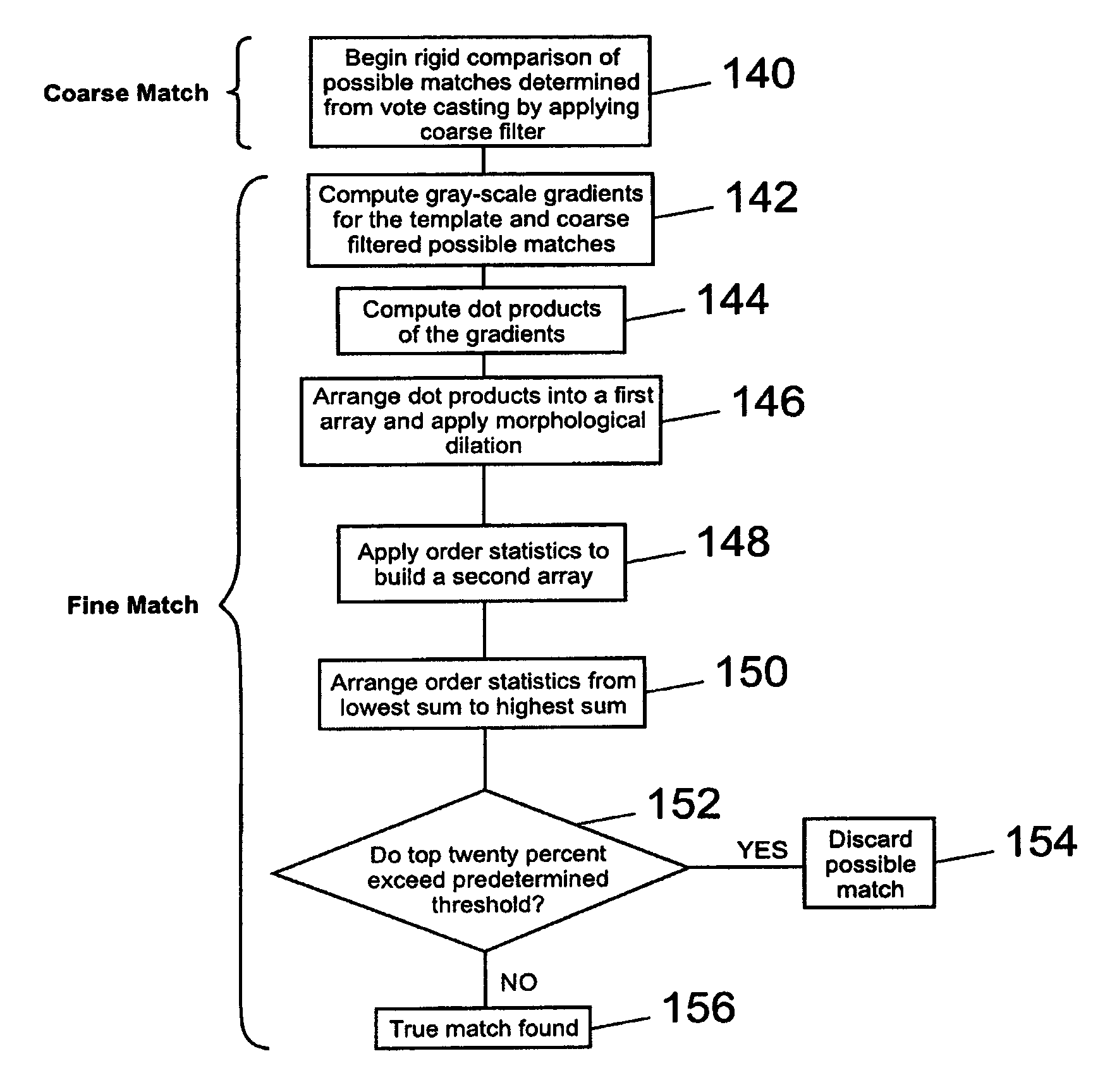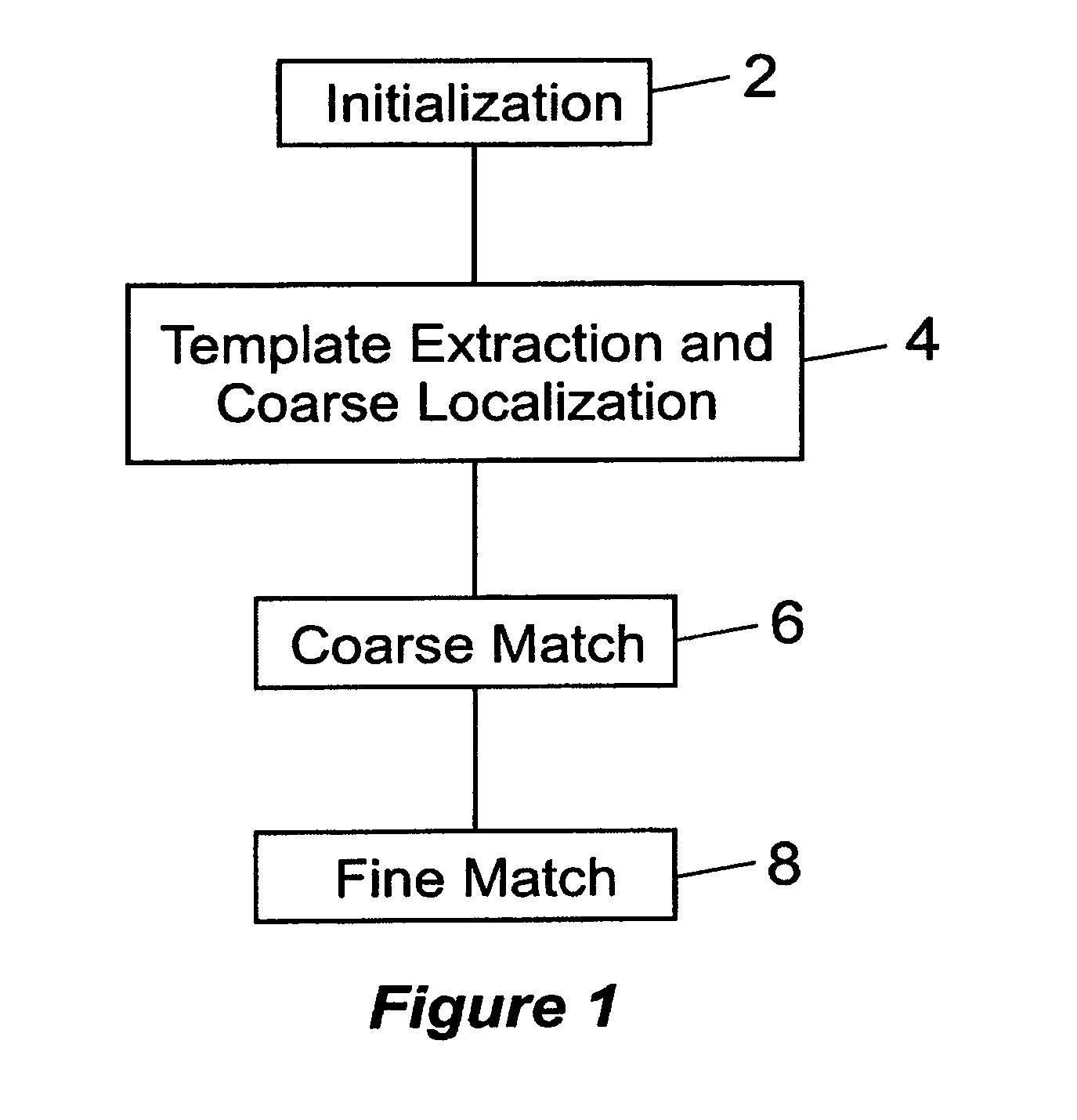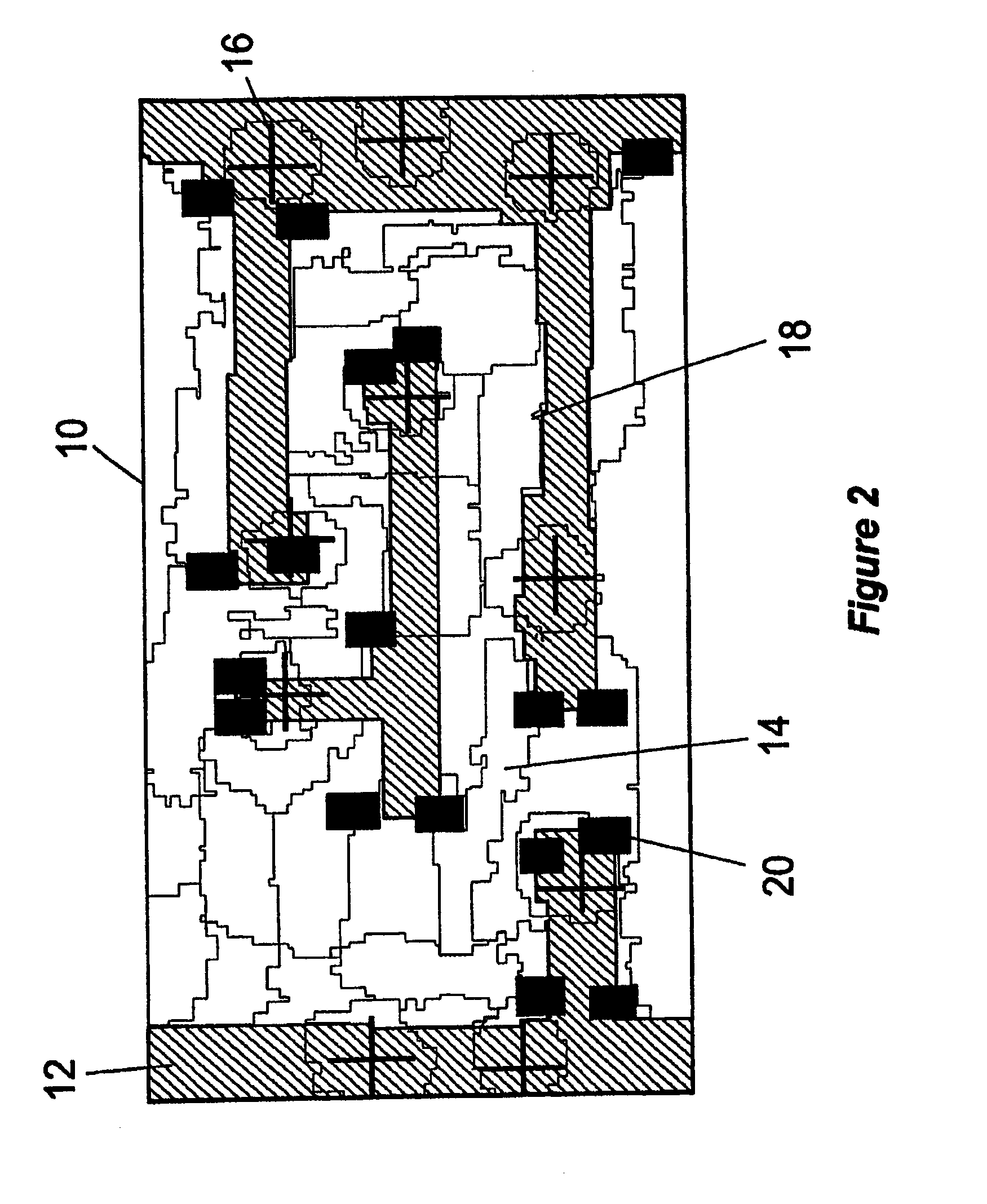Method of design analysis of existing integrated circuits
a technology of integrated circuits and design analysis, applied in image enhancement, instruments, image data processing, etc., can solve the problems of increasing difficulty and time required for the operator directed process, especially time-consuming the extraction of standard cells, and excessive processing time for reliably extracting netlists
- Summary
- Abstract
- Description
- Claims
- Application Information
AI Technical Summary
Benefits of technology
Problems solved by technology
Method used
Image
Examples
Embodiment Construction
[0044]The present invention provides a computationally efficient method for finding the location of standard cells in an IC layout. FIG. 1 shows a flowchart of the four main steps of the present invention. The first step 2 is an initialization process that happens before the operator begins the circuit extraction. It is necessary to extract features of the entire image that will be used as the basis for comparison for the subsequent step. The second step 4 defines the template of the standard cell and provides a coarse localization of possible matches. The third step 6 acts as a coarse filter or coarse match for the possible matches found in the second step 4. The fourth and last step 8 provides a fine filter or match for the resulting possible matches found in step 6. Steps 2 and 4 provide a shortlist of possible locations of the standard cell in question and steps 6 and 8 perform a more rigid comparison on the shortlist. These steps will now be explained in greater detail. The fir...
PUM
 Login to View More
Login to View More Abstract
Description
Claims
Application Information
 Login to View More
Login to View More - R&D
- Intellectual Property
- Life Sciences
- Materials
- Tech Scout
- Unparalleled Data Quality
- Higher Quality Content
- 60% Fewer Hallucinations
Browse by: Latest US Patents, China's latest patents, Technical Efficacy Thesaurus, Application Domain, Technology Topic, Popular Technical Reports.
© 2025 PatSnap. All rights reserved.Legal|Privacy policy|Modern Slavery Act Transparency Statement|Sitemap|About US| Contact US: help@patsnap.com



